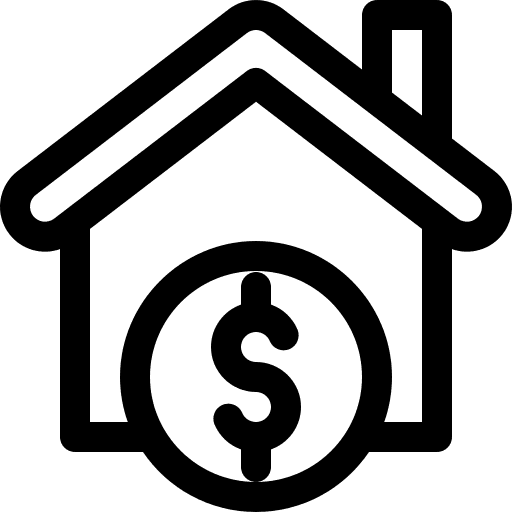
Compare alternatives
We currently don't have a partnership for that product, but we have other similar offers to choose from (how we picked these ):
How to compare the cheapest home loan rates
You'd think it was as simple as looking at the lowest number in the table, right? Well, it can be. But there are some things to watch out for that could make your cheap home loan…not so cheap.
1. Ok yes, look at the rate
The starting point is to always look at the rate. The lower rate, the lower your repayments.
2. But then look at the fees
Some loans lure you in with a cheap attractive rate, but then you find it piles on a huge fee to apply and another fee to pay each month as well. Your cheap rate now costs you more per month than the slightly higher interest rate with no fees.
3. Then have a little glance at the comparison rate
Comparison rates are normally based on loans of $150,000 so they're not always helpful. But if the comparison rate is much higher than the actual interest rate, you can bet there are other costs driving your repayments up.
4. Don't forget to look at the features
It's all well and good getting a low interest rate but if you're sacrificing access to features that could save you money in the long run, it's not worth it. Take an offset account, for example. Using an offset account will mean you pay down the loan faster because it reduces the amount of interest you need to pay.
The lower the interest rate the lower the repayments
The number one factor in determining a cheaper home loan is a low interest rate.
Let's compare 2 otherwise identical home loans with slightly different interest rates.*
| Interest rate | 7.48% | 5.69% |
|---|---|---|
| Loan amount | $625,050 | $625,050 |
| Loan term | 30 years | 30 years |
| Monthly repayment | $4,362 | $3,624 |
| Monthly saving | N/A | $738 |
| Annual saving | N/A | $8,856 |
As you can see, with the lower interest rate, you save $738 a month – or $8,856 a year.
*We're using the average owner-occupier home loan size from the ABS, the average variable rate loan in Finder's database of the full market and the lowest variable rate.

What are the lowest home loan rates on the market?
Every month, we analyse the rates in our database to create a list of the market's cheapest loans.
The lowest variable interest rate in Finder's database is 5.38%
The lowest fixed interest rate in Finder's database is 4.99%
The cheapest rates over time.
What are the cheapest home loans at the big 4 in December 2024?
Interest rates can change depending on your circumstances, but as a guide, here are the cheapest home loans from the big 4.
| Bank | Cheapest Fixed Rate | Cheapest Variable Rate |
|---|---|---|
| ANZ | 5.74% | 6.09% |
| CBA | 6.04% | 6.15% |
| NAB | 5.89% | 6.44% |
| Westpac | 5.89% | 6.74% |
The cheapest rate from the big 4 (by far!) is from CBA's new digital home loan which launched in May 2024. Even so, it's still a fairly considerable difference from the lowest rate across the market.
Let's do what we do best: compare.
Say you take out a $500,000 loan over 30 years with that 6.15% rate. You'd be paying $3,047 a month in repayments.
But with May's lowest variable rate across the market of 5.69%, you'd only (ha) be paying $2,899. That's a difference of $148 a month, or $1,776 a year.
In case you're interested, your repayments would be $3,190 with NAB's lowest variable rate. That's $291 more a month than the lowest market rate and $3,492 a year!
Your interest rate update
On 5 November the official cash rate was held at:
4.35%
The lowest variable owner-occupier rate on the market is:
5.38%
Assuming the average owner occupier home loan size of $641,143 you would be making monthly repayments of:
$3,718

"I wanted to make sure I have one of the cheapest home loans on the market. So I found an online lender with a consistently low interest rate (I should know, I check rates every month). But I also made the sure the loan had an offset account. For me, being able to build up savings in the offset account speeds up my loan and cuts down my overall interest charges dramatically. This makes the loan much cheaper in the long run."
What to look for in a cheap home loan
At a very basic level, the cheapest home loan is the one with the lowest rate. But every borrower has different needs. So beyond a low rate, you need to get a loan that actually helps you achieve your property goals and financial needs.

A loan you can pay off asap
Home loans are normally taken out for 30 years. But no one wants to spend the next 30 years making those repayments, right? With most variable rate home loans you can actually make extra repayments. By paying more off your loan than the required monthly repayments, you pay off the loan early and pay less in interest.
Fixed rate loans are less likely to allow extra repayments and will probably charge a break fee if you do repay early.

A loan that matches your strategy
Owner-occupier home loans have the cheapest rates. But they're no good if you're a property investor because you'll need an investment loan.
Most borrowers want a principal and interest loan, but for investors, an interest-only loan offers tax benefits. It's important to understand your strategy early on. You may be someone that will start off as an owner occupier but then move out and use it for investment (if you have taken advantage of first home owner concessions, for example).

A loan with an offset account
Is it worth going for the cheapest home loan if it doesn't have an offset account?! Well, that's up to you. But considering an offset account could see you paying your loan off early and therefore less in interest, it's a pretty key thing to want to include as part of your loan. An offset account is essentially a bank account attached to your mortgage. Instead of earning interest, it reduces the interest you'll pay.
Let's say you have $100,000 in your offset account and you have a $500,000 loan. You'll only pay interest on $400,000.
You still repay the same amount every month, but this just means more of your repayment goes towards the remaining loan value and not on interest. So you end up finishing the loan faster.

"If I had to credit just one thing with helping me repay my home loan in just 7 years, I'd say it was an offset account. This is a debt-busting secret weapon. You should keep every cent to your name in one of these – we're talking your savings for everything, your emergency cash stash and even your salary. You'll likely save tens of thousands of dollars and shave years off your time in debt."
3 extra tips to help you save money on your home loan
1. Choose your loan term carefully
Most borrowers choose 30-year loan terms. And spread out over that time, your monthly repayments are as low as possible.
If you picked a shorter loan term your monthly repayments would be higher, but you'd pay off your loan 5 years earlier, saving thousands in interest.
Let's look at 3 examples. These loans are all for the same amount borrowed, but the loan term changes:
| Loan term | 30 years | 25 years | 20 years |
|---|---|---|---|
| Interest rate | 6.00% | 6.00% | 6.00% |
| Loan amount | $600,000 | $600,000 | $600,000 |
| Monthly repayment | $3,598 | $3,866 | $4,299 |
| Total cost* | $1,295,030 | $1,159,743 | $1,031,611 |
*Total cost here refers to the amount of interest you pay over the life of the loan, plus the principal.
As you can see, a longer loan term means cheaper monthly repayments. But a shorter loan means you pay less interest in the long run, making the whole loan cheaper.
2. Find a loan with lower fees
Some lenders charge multiple loan fees that can add up to hundreds of dollars. But other lenders charge basically no fees at all (you still have to pay government fees like a mortgage registration fee).
If 2 loans have identical interest rates and features, the one with fewer fees will be the cheapest home loan.
3. Save a bigger deposit
Easier said than done, of course. But saving a bigger deposit means borrowing less money. And that instantly makes your home loan cheaper.
It saves you money in other ways too:
- You can avoid lenders mortgage insurance. If your deposit is at least 20% of your property's value, you can avoid the added expense of lenders mortgage insurance (LMI). Borrowers with smaller deposits usually have to pay this, which can add thousands of dollars to your loan costs.
- You can unlock lower rates. Many lenders reserve their cheapest interest rate offers for borrowers with a deposit of 20% or more.
Watch: How to find a lower home loan rate
Frequently asked questions about getting a cheap home loan
More guides on Finder
-
Home loan cashback offers
Home loan cashback deals can help you refinance to a cheaper interest rate and get a lump sum cash payment. Compare the latest deals and check your eligibility today.
-
Calculate the income needed to buy a home in any suburb in Australia
Work out how much you need to earn to buy a house in any Australian suburb.
-
What happens when your mortgage fixed rate expires?
When your fixed rate period ends you move to a variable rate. If you fixed when rates were low, you could end up on a much higher rate.
-
Average Australian mortgage statistics
Our comprehensive guide to home loan statistics.
-
Home loans for temporary residents of Australia
With a strong employment history and enough money in the bank, a temporary resident will be given almost the same opportunities as a citizen when it comes to home loans.
-
Compare bank interest rates in December 2024
Compare current bank interest rates for home loans, credit cards, personal loans, savings accounts and term deposits to find the best deal for you.
-
Investment home loan rates
The best investor home loan rates that have been offered in years have hit the market. Compare investment property loan rates today.
-
Variable home loan rates comparison
Find a great deal on a variable interest rate home loan from lenders large and small. Start comparing and saving today.
-
Best home loan rates – 6 expert picks
Learn how to compare rates to find the best home loan and start saving money on your mortgage today.
-
Best home loans with offset accounts
What is an offset account? It can save you thousands in interest and help you own your home sooner.
Ask a question

